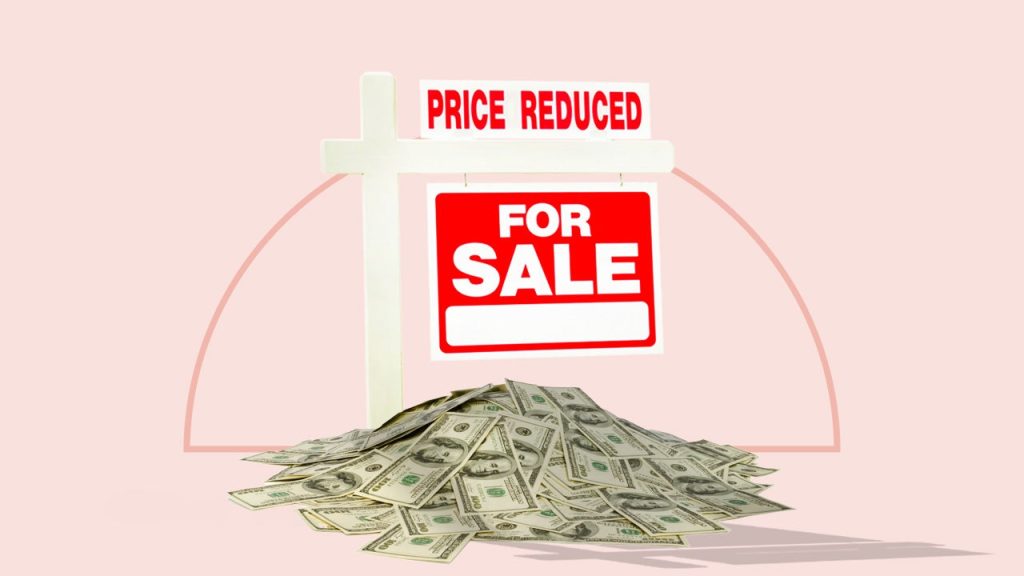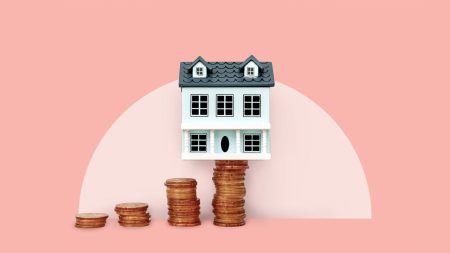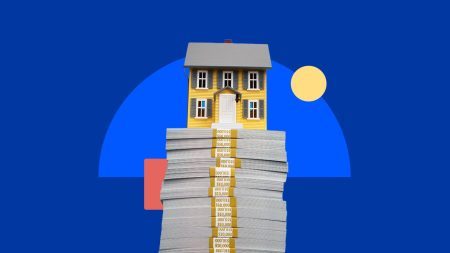Key takeaways
- Many people — and politicians — blame large investors for buying up available homes and making prices unaffordable for everyday Americans.
- But studies show that the largest institutional investors operate in only a small handful of U.S. markets.
- In reality, the majority of the country’s investor-owned homes are held by small mom-and-pop investors who own only a few properties.
The National Association of Realtors’ existing-home sales report for May wasn’t very encouraging for anyone hoping for a robust spring and summer housing market. Sales of existing homes were up a scant 0.8 percent from April, and down by 0.7 percent from last year, marking the fourth consecutive month of declining year-over-year home sales. This is a troubling trend, considering that the number of existing homes sold in 2024 was the lowest total since 1995, when there were around 73 million fewer people in the country.
Sales of new-construction homes had been a bright spot in an otherwise dreary housing market — but there too, May numbers were discouraging. Sales in May fell by over 13 percent from April, according to Census data, and the National Association of Home Builders isn’t expecting much improvement in the near term: Builder confidence fell by six points in May to the lowest level since 2022.
Meanwhile, as all of this bad news was percolating, one segment of the housing market actually seemed to gain momentum. According to the Summer 2025 Investor Pulse Report from BatchData, investor purchase activity jumped to its highest level in at least five years, accounting for nearly 27 percent of all residential home purchases. But is a large investor market share a good thing for the market overall?
Is Wall Street gobbling up Main Street?
Increased investor activity is not something everyone has welcomed with open arms. Both the media and politicians have decried the impact of institutional investors on the housing market. In fact, earlier this year, Oregon Senator Jeff Merkley and U.S. Representative Adam Smith of Washington introduced the Humans Over Private Equity (HOPE) for Homeownership Act, to “put an end to the harmful practice of hedge funds buying up single-family homes.”
Senator Merkley’s website explains the rationale for the bill: “Large-scale hedge fund investors are taking over the housing market at an alarming, accelerating rate. In 2022, large institutional investors and hedge funds owned about 700,000 single-family home rentals, and financial analysts forecast that this ownership footprint will grow to 40 percent of all single-family home rentals by 2030.”
These congressmen aren’t alone in their efforts to free the housing market from the clutches of large financial institutions. Bills are popping up in state legislatures across the country to limit the number of properties a single entity can own.
On the surface, this argument appears to have some merit. If large institutions are in fact gobbling up hundreds of thousands of homes and converting them to rental units, it removes inventory from the housing market, making things harder for homebuyers — especially first-time buyers, who are looking for the same types of homes investors target. And scarce inventory usually makes prices go up.
The only problem with the argument? It’s not true.
Or are investors actually helping the market?
In reality, while investors may own a significant share of the overall housing stock, the nature of these investors is very different from how they’ve been categorized by detractors.
According to the Investor Pulse Report, an overwhelming 85 percent of investor-owned single-family properties are owned by investors who hold only five homes or less — so not exactly giant hedge funds. [Editor’s note: The Investor Pulse Report was prepared by the author’s CJ Patrick Company.]
An additional 5 percent are held by investors who own between six and 10 properties, and another 5 percent by entities owning between 11-50. That means that, all told, 95 percent of the single-family homes owned by investors are held by relatively small investors with 50 or fewer properties.
And for anyone worried about the relatively high share of home purchases made by investors, there’s a reasonable explanation: The number of traditional homebuyers has plummeted since mortgage rates skyrocketed in mid-2022. “The increase in the percentage of investor purchases is mostly due to a dramatic decline in purchases by traditional homebuyers,” says BatchData co-founder and chief innovation officer Ivo Draginov. “Investors purchased 9 percent more homes in 2024 than they did annually from 2020 to 2023, while home sales declined by 30 percent.”
Investors accounted for 18.5 percent of home purchases from 2020 to 2023, 25.7 percent in 2024 and 26.8 percent earlier this year. So, an argument could actually be made that investor activity is playing an important role, providing much-needed liquidity to a lackluster market. It might even be preventing housing from falling even further than it has over the past few years.
States most impacted by investor ownership
The states with the highest populations tend to also have the highest number of investor-owned properties. Texas has the largest set of investor-owned properties at 1.66 million, according to the report. California is next at 1.45 million, followed by Florida with 1.21 million.
But none of these ranks among the states with the highest percentage of investor-owned properties. That distinction belongs to Hawaii, where a huge 40 percent of the state’s homes are owned by investors. Of course, the state’s economy is heavily dependent upon tourism, so it’s likely that many of these investment homes are held as vacation properties or short-term rentals. Other states with a relatively high percentage of investor-owned properties include Alaska, Arkansas, Vermont, West Virginia and Wyoming.
It’s worth noting that none of those high-percentage states has historically been on the radar for institutional investors or hedge funds. A report published by Harvard’s Joint Center for Housing Studies found that “Large single-family operators have especially concentrated portfolios… investors who own at least 1,000 homes have 45 percent of their single-family holdings in six markets: Atlanta, Phoenix, Dallas, Charlotte, Houston and Tampa.”
So the Sun Belt states, which experienced strong population growth and job growth over the past few years, were the primary focus of the largest investors. This focus may have resulted in ownership levels that distorted local housing trends — politicians and others may have incorrectly assumed that this distortion was widespread, rather than isolated, leading to some of the proposed anti-investor legislation we’re seeing today.
Boon, bane or somewhere in-between?
Investor homeownership isn’t anything new. In fact, even institutional real estate investing has been around for a while, gaining traction during the foreclosure crisis that accompanied the Great Recession back in 2008.
But the entrance of massive institutions and hedge funds, and their concentration of large-scale buying activity in a small number of markets, has served to distort public opinion on the reality of investor activity in the housing market. The overwhelming majority of investor-owned homes are actually held by our neighbors — mom-and-pop investors who own and rent a handful of properties.
Investor purchases aren’t the primary reason home prices have soared during the post-pandemic years. Credit for that goes to a decade of underbuilding, leading to extreme scarcity of homes for sale as millions of young adults were reaching prime age for homebuying. And to historically low mortgage rates that made escalating home prices at least somewhat tenable.
Investors play an important role in the housing ecosystem today, providing liquidity during an extended period of low demand from traditional homebuyers — and providing rental inventory to prospective homebuyers who’ve been temporarily priced out of the market.
Why we ask for feedback
Your feedback helps us improve our content and services. It takes less than a minute to
complete.
Your responses are anonymous and will only be used for improving our website.
Help us improve our content
Read the full article here









